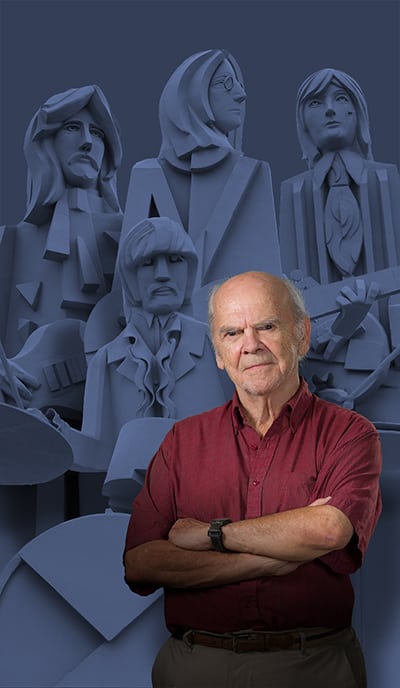 Artist David Adickes has been a vital part of the Houston art scene for over 65 years. A native of Huntsville, Texas, David moved to Houston upon his completion of two years of art studies at the Atelier Fernand Leger in Paris. By the end of that year (1951), he had garnered a first place finish and a one-man show at the Museum of Fine Arts, Houston.
Artist David Adickes has been a vital part of the Houston art scene for over 65 years. A native of Huntsville, Texas, David moved to Houston upon his completion of two years of art studies at the Atelier Fernand Leger in Paris. By the end of that year (1951), he had garnered a first place finish and a one-man show at the Museum of Fine Arts, Houston.
Longing to stretch his horizons even further, both geographically and artistically, David expanded his worldview with extended stays in France, a summer in Tahiti, and a two-year, around-the-world journey. During these treks David continued to develop his skill as an artist, continuously sending paintings back to his home base in Houston: Dubose Gallery, headed by gallerist Ben Dubose. He also explored academia, teaching art at The University of Texas and even opened a night club, Love Street Light Circus and Feel Good Machine, in 1967.
But perhaps the biggest career move came in 1983, with the unveiling of “The Virtuoso,” David’s first monumental public sculpture. To this day, the whimsical 36-foot concrete statue, a semi-abstract cellist, serves as an icon for Houston’s Theater District.
That first large sculpture launched a new direction for David; eleven years later came the iconic 76-foot Sam Houston statue. And the years since have seen the name David Adickes become synonymous with monumental sculpture. In addition, David’s bronze sculptures of Dr. Denton Cooley and George H. W. Bush stand as testament to Houston’s heroes.
And through all those years, Houston has remained home for David Adickes. In 2013 that fact became expressed in concrete, with the unveiling of “We Love Houston.” Its uplifting message and colorful design express not just David’s creativity, but his sense of joy that that creativity brings. It and other recent works—The Beatles, Charlie Chaplin, and “art is fun,” among others—embody three principles of David’s work. First, art should have permanence, both literally and metaphorically. Second, public art can and does enhance the quality of life of the greater community. And third, art can and does enhance the life of every individual who comes in contact with it.
